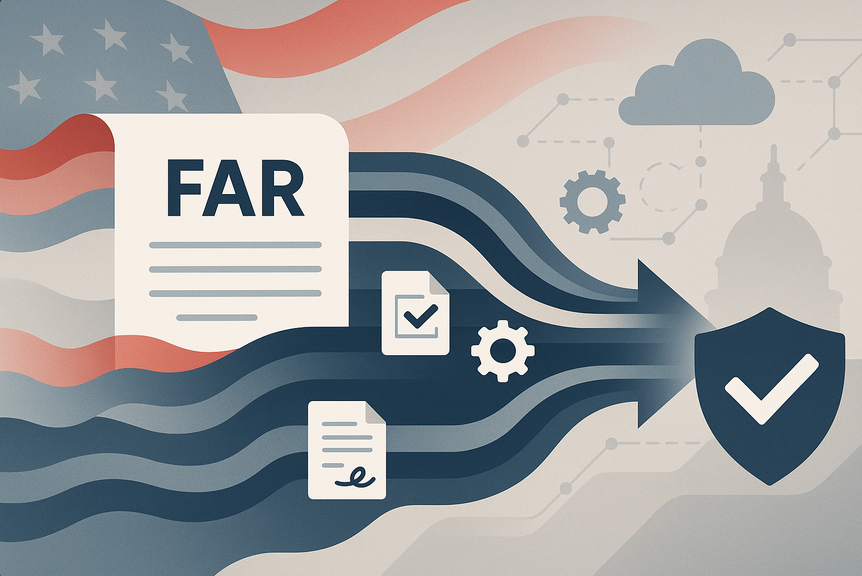TAKE NOTE (Insights and Emerging Technology)

|
Read more at Federal NextGOV link below
UNDER DEVELOPMENT (Insights for Developers)
Agentic AI is the Game-Changer for Business Systems Testing

Intro
In today’s dynamic enterprise environment, business systems like SAP, Salesforce, Workday, and Oracle underpin mission-critical processes across finance, HR, logistics, and customer engagement. As these systems evolve with continuous integration and fast-paced updates, traditional testing struggles to keep up. Manual test case creation, brittle automation scripts, and slow regression cycles all conspire to slow digital transformation.
Artificial Intelligence (AI) is changing that. AI agents—intelligent software entities that perceive, reason, and act—are revolutionizing how we approach business system testing. They bring adaptability, speed, and insight to a testing process that has historically been static and reactive.
This blog explores how AI agents are transforming testing across business systems, whether or not RPA (Robotic Process Automation) is involved. We’ll demystify what AI agents actually do, how they integrate with existing tools, and how they unlock true continuous quality assurance (QA).
Traditional Business System Testing Is A Bottleneck
Testing in enterprise systems is essential but often inefficient. Consider SAP invoice processing… The test cases are manually scripted and hard to maintain. Any UI or logic changes break tests, leading to false positives. Regression testing is time-consuming and often incomplete, and this challenge multiplies across modules and integrated systems. Test teams are stretched thin, and as businesses move toward Agile and DevOps, testing becomes the bottleneck.
This is where AI and especially agents can help. But AI agents are not magical bots that test your system independently. Rather, they enhance and optimize your existing testing processes. Instead, think of them as intelligent assistants that:
- Analyze what needs to be tested
- Generate or maintain test cases
- Heal broken scripts automatically
- Prioritize high-risk test paths
- Predict failures and optimize test coverage
They don’t replace your test automation tools—they supercharge them.
Use Cases of AI Agents in Business System Testing 
Test Case Generation with AI
AI agents can scan business process models, change logs, or production usage data to auto-generate test cases. For example, if a new step is added to the invoice approval process in SAP, the AI agent identifies this and creates relevant test cases, reducing manual scripting effort.
Self-Healing Test Scripts
If a button on the Salesforce UI is renamed or a field in SAP Fiori is repositioned, traditional scripts break. AI agents use visual recognition and contextual clues to auto-update these scripts—no human intervention required
Impact-Based Test Prioritization
Rather than running an entire regression suite, AI agents analyze which parts of the system were affected by recent changes and prioritize tests accordingly. This risk-based testing reduces test cycle times dramatically.
Predictive QA and Anomaly Detection
AI agents learn from historical test results and production logs to detect anomalies, predict failure points, and recommend additional test coverage.
Conversational Test Agents
For non-technical business users or citizen developers, AI agents can act as conversational assistant
The user can ask questions, such as:
- “Show me all failing invoice posting tests.”
- “Explain why the payroll approval flow failed.”
- “Generate tests for this new leave request workflow.”
– Dig Deeper –
Embracing AI and Autonomous Testing to Accelerate Software Delivery
Q&A (Post your questions and get the answers you need)

Q. Are AI Agents the Same as Generative AI?
A. Artificial intelligence is evolving quickly, and two terms, AI agents and generative AI, are often confused, While they’re related, they’re not the same thing.
What Are AI Agents?
AI agents are systems designed to perceive, decide, and act. They take in information from their environment (like data, APIs, or sensors), apply reasoning or rules, and then take action to achieve a goal. For example, a chatbot that routes support tickets, or a robotic process automation (RPA) bot that submits forms, both function as agents. Importantly, agents don’t have to be “intelligent” in the generative sense many are purely rule-based.
What Is Generative AI?
Generative AI refers to models that create new content, such as text, images, or code. Tools like GPT or DALL·E fall into this category. They don’t decide or act on their own; they generate outputs in response to prompts. Generative AI is a capability, not an agent.
Where They Overlap?
The real power comes when these concepts are combined:
- Agents use generative AI to make their actions more flexible and human-like (e.g., drafting an email, creating a report, or generating code).
- Generative AI becomes more useful inside agents, since agents provide the structure to decide when and how to apply generative capabilities.
The Bottom Line
- Agents = decision-makers and doers.
- Generative AI = content creators.
- Together = generative agents, systems that perceive, decide, act, and create.
As organizations adopt AI, understanding this distinction helps set expectations and guides strategy: generative models alone won’t transform work—but agents equipped with generative AI just might.
Cheers!


